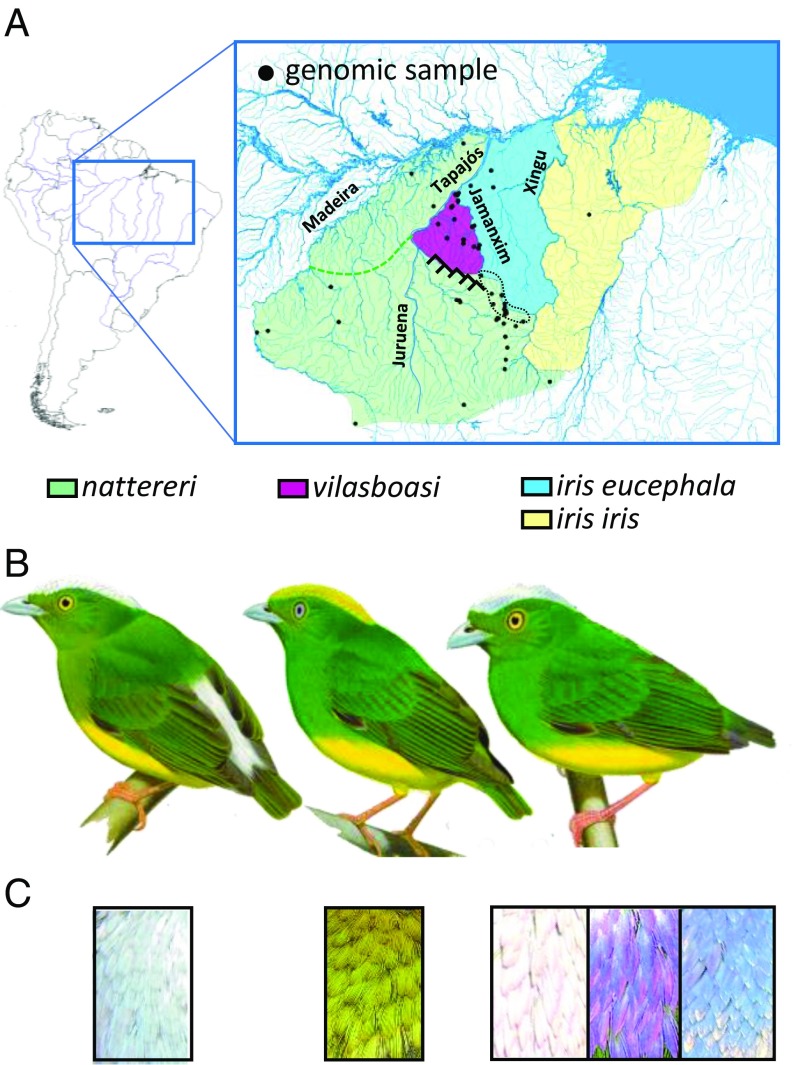Fig. 1.
The three species of Lepidothrix manakin distributed east of the Madeira River in Amazonia. (A) Outside the headwater regions, rivers and mountains largely demarcate the boundaries of these species with the Tapajós River separating L. nattereri from the other species, the Jamanxim River possibly separating L. vilasboasi from L. iris (however, see text), and the Xingu River separating the two subspecies of L. iris. The Cachimbo range (inverted V’s) may provide a partial barrier separating L. nattereri and L. vilasboasi. All these taxa are known or presumed to come into geographic contact in headwater regions where rivers and mountains cease to demarcate taxa boundaries. A contact zone possessing both L. nattereri and L. iris eucephala individuals as well as hybrids between them is demarcated by the black dotted contour. (B and C) Males of these species differ in the presence (L. nattereri) or absence (other species) of a white rump patch (B) and in the color of the crown patch (C). The crown patch in L. iris is iridescent and varies from brilliant white (its usual look, which is very similar to L. nattereri) to blue or purple, depending on the angle of light. Males of the two subspecies of L. iris distributed on either side of the Xingu River are almost identical in plumage, with L. iris iris possessing a thin green strip between the upper mandible and the crown patch and with the crown patch extending all the way to the mandible in L. iris eucephala. Females (not shown) appear like males but lack the contrasting crown and rump patches and do not differ appreciably among species. The two subspecies of L. nattereri (L. nattereri nattereri north of the green dashed line and L. nattereri gracilis to the south) do not differ in male plumage. Illustrations of species used with permission from Handbook of Birds of World (30).

